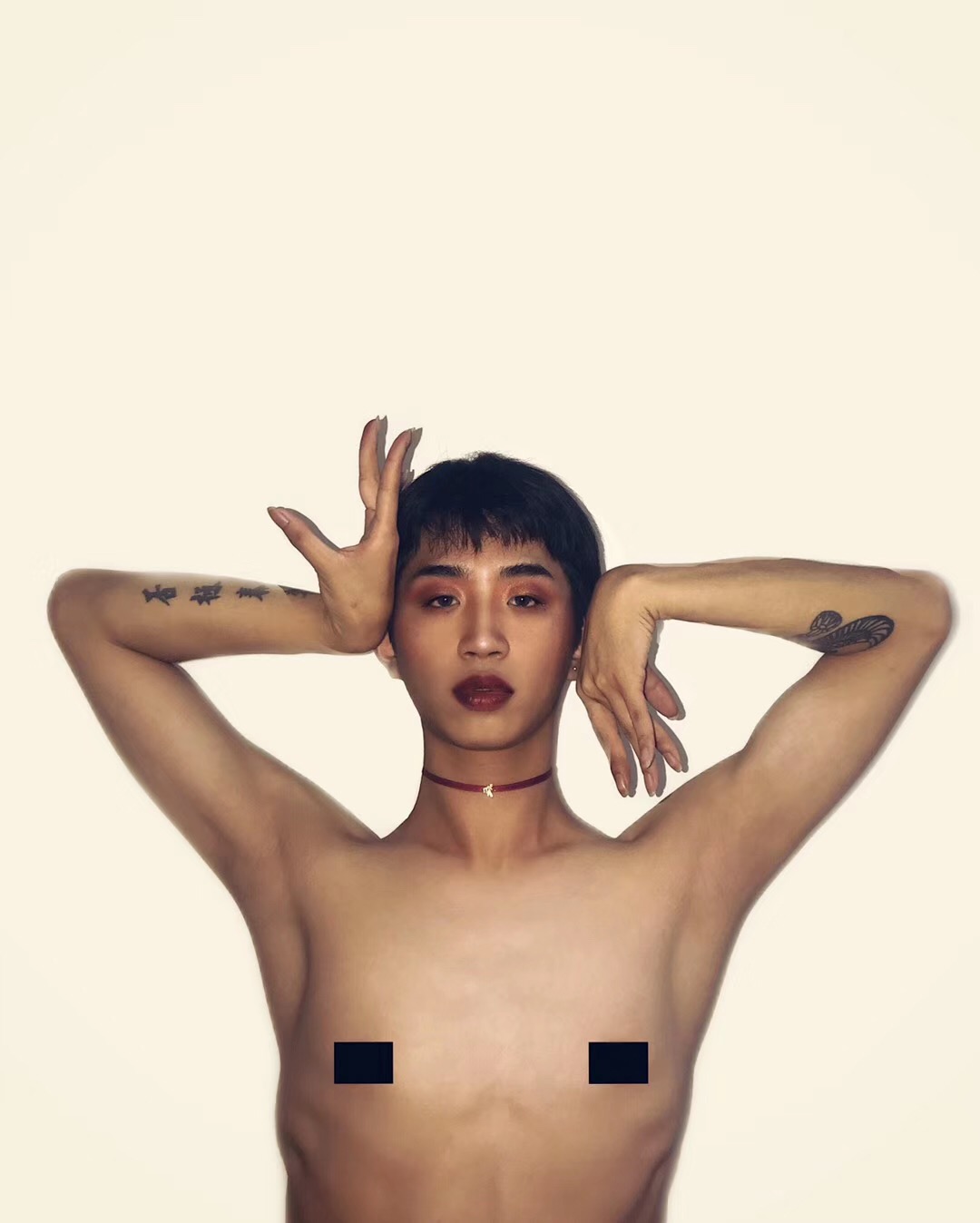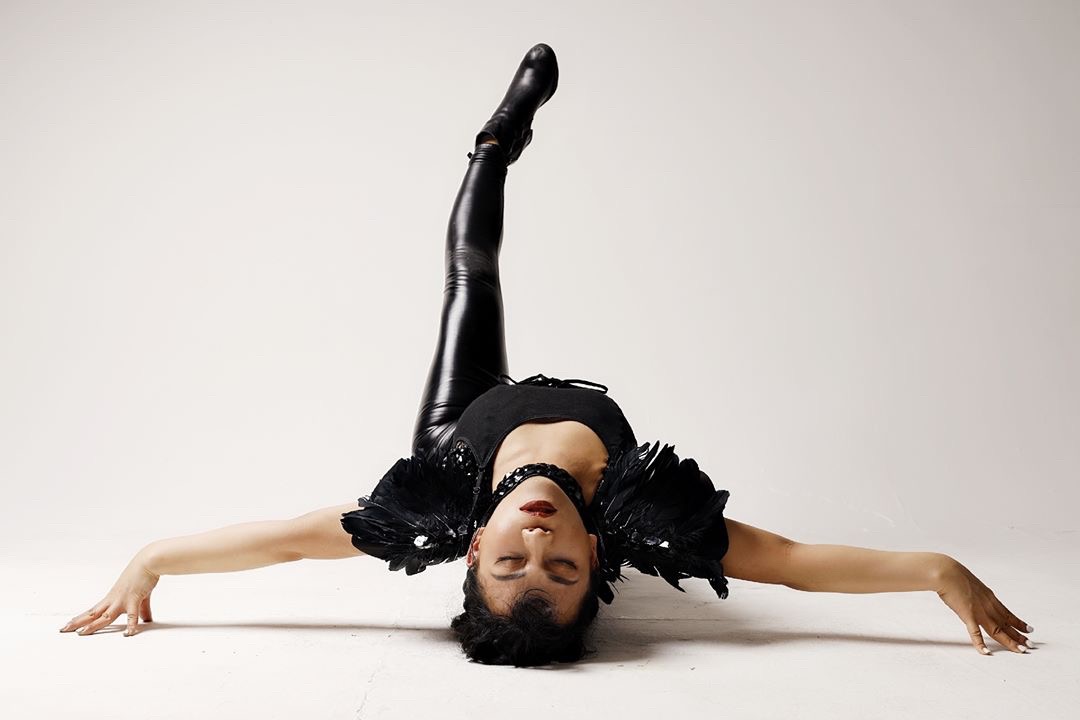How can you define voguing? Well, apart from it being a dance style, obviously, voguing is an unapologetic attitude. Voguing is freedom of expression. Voguing is a culture of perseverance forged from oppression. Born during the 60s of the Harlem ballroom scene, a hub for New York’s Black and Latino LGBTIQ communities, the dance has now gone international, taking root across Asia and growing in popularity within the Chinese-speaking world; from Hong Kong to the far reaches of Western China.
“It was the style and stunning visual performance that first attracted me,” says Hong Kong voguing student and drag queen Toby Yan, who’s also known as Daisy. “I didn’t know much about it at first, but I was curious to learn about duck walking, and death drops. I love Shangela (from RuPaul’s Drag Race), and every time she death drops, the crowd goes wild. I was fascinated.”
But voguing first made its way east by way of Japan in the 80s, way before the reign of Drag Race. The long history of cultural exchange between Tokyo and New York City gave rise to popular voguers like legendary Mother Koppi Mizrahi and Aya and Bambi, who adapted the art into their own unique style — and naturally, Taiwan, the neighbouring island nation, took notice. Throughout much of the 90s, Taiwan was heavily influenced by Japanese pop culture. As one of the more progressive and liberal countries in Asia -– it recently legalised gay marriage -– voguing went mainstream in Taiwan all the way back in 2010, when pop artist Jolin Tsai released the seminal video Honey Trap. Tsai mixed old way (think editorial fashion poses mixed with straights lines and precise arm movements) and new way (characterised by contortions and rigid movements) styles, displaying flexibility and swift, illusory hand movements, blending tradition and originality in an adept way that drove fans wild.
Around this time Hongkonger Ken Liu aka Ken Ken Milan was studying in Taipei while stepping foot into the world of dance. He was mostly learning waacking and hip hop until he met House Mother Natalie Milan of House of Milan at Taipei’s very first ball – the Kick Ass Ball. Immediately, Liu fell head over heels for voguing’s distinct glamour. “I admired the confidence that the dancers had,” says Liu. “They exude such fearlessness in their mannerisms and sense of style. I’ve improved my looks since.”
Liu, the serious student that he was, flew to New York City for first-hand lessons with legendary House Father Stan Milan aka Stanley Devaughn of the House of Milan. After building a relationship during months of training – and at Natalie Milan’s behest – Liu became a newly inducted member of the house. When he returned to Hong Kong in 2017, then, it was perhaps inevitable that Lui would become the city’s own first voguing teacher. In just two short years, what began as a few workshops here and there has expanded to packed classes held almost every day of the week, as well as dance showcases, university campus performances and of course ballroom competitions. “I made voguing my mission,” says Liu. “Not a lot of people know about it in Hong Kong, so I felt it was my duty to promote it.”
But as another culture subsumes a style so tied with New York’s black and Latinx ballroom scene, there are obvious questions about cultural appropriation. Liu is undeniably talented, but does he have the right and the license to promote Voguing. After all, he’s a Hongkonger benefitting from a culture created by POC in America. Cultural appropriation is rife in today’s global pop culture, and unfortunately, members of the Black and Latino LGBTIQ community still don’t get their fair share of the profits made at their expense. “It’s always a sensitive topic for ethnic communities in the US, especially black and Latino communities,” says Devaughn, who was featured in season 1 of Pose. “People knock us for our culture until white people do it and profit from it. But, overall with the increasing popularity of voguing, I don’t think it’s appropriation. Ken Ken is cool and I trust Natalie’s taste, so I took him in.”

Devaughn has been in the scene since 1991, hanging out at the Christopher Street pier. Initially he practiced hip hop, the hustle and house dance before his out and proud childhood friend took him to his first ballroom. “It was awesome,” says Devaughn, who at the time had not yet come out. “The theme was S&M punk rock and I saw queens swinging live chickens, beautiful girls, who turned out to be boys and really competitive dancers. It was my first introduction to the community.” Voguing soon became a big part of Devaughn’s life and he started rising in the ranks. He became a member of the House of Chanel, before being tapped to be the House Father of the House of Milan. That’s when he met the godfather of voguing Willi Ninja, also known as William Leake. As one of the dance form’s pioneers Willi is world renowned, being featured in the award-winning documentary Paris Is Burning, and teaching Naomi Campbell and Iman to channel the energy of voguing in their catwalk strut.

“When I met Willi he invited me to Germany and Italy,” says Devaughn. “It was amazing to see a thriving circuit. I always knew it would grow, but not like this. And I know Willi always wanted it to grow worldwide. When you travel and see how much people genuinely love the culture, are engaged in it, and learn as much as they can about it, it’s about seeking liberation.”
Liu himself is dedicated to promoting voguing throughout Asia. Besides Hong Kong, he’s travelled to major Chinese cities including Guangzhou, Shanghai and Chengdu, spreading his knowledge of the culture and giving credit where credit is due. “Every year, I do a workshop that teaches my students about the history of voguing and its relationship with the Black and Latino LGBTIQ community. Voguing was a safe space for marginalized people to express themselves freely. It’s also a place the community learned to protect and love themselves.”
It’s that message that has uplifted Yan, who, at home, felt like his family “dismissed his gender expression.” When transforming into Daisy, Yan would have to secretly change into drag in the corridor of his apartment complex, away from his parent’s gaze. “I feel really open with the friends that I’ve made through voguing. It has been a healing experience.”
Unlike cities in the US or in Europe where the ballroom scene is primarily made up of trans people and gay men, Hong Kong’s scene, according to Yan, comprises around 70 per cent cis women and an unusually low 30 per cent identifying as gay men. He estimates there’s nobody in the scene who identifies as trans, and no one who is non-ethnically Chinese. “Hong Kong is still conservative, with issues regarding trans rights only coming into the limelight now, and a lot of people are still in the closet,” says Yan. “And if gay guys are out, they are terrified of being perceived as not masculine.”
“I think women like voguing because it’s so liberating,” says Holie Ho. As Holie Ebony, she’s House Mother of the Kiki House of Marciano. “I’ve been dancing for 10 years, but nothing has allowed me to display different emotions like voguing. I can be really sexy, angry or sad. I can tell the story I want.”

Ho discovered Natalie Milan voguing on YouTube and was hooked. At that time, there were no instructors in Hong Kong, so she practised on her own, then flew to Taipei for lessons. Then it was off to Tokyo for further training and then to New York City on her own to compete at a ball. In 2017, she joined the House of Ebony. “I was ecstatic,” says Ho. “When they said: ‘You are now an Ebony’, I felt recognition and acceptance.'”
Ho was understandably hesitant to enter the scene, as a cis woman. “At first it was strange, especially outside of NYC, in like Jersey or Miami,” says Ho. “There are times that I would be the only Asian face and the only cis woman in the room, which would attract a lot of curiosity. But once I displayed my vogue femme capabilities, people became really friendly.”

It’s perhaps no coincidence that voguing has become so popular in Hong Kong, given the current societal and political situation. As the protests currently taking place across the city show, Hongkongers have felt suppressed and disenfranchised for years. Voguing, as seen in other parts of the world, appears when an outlet for unfiltered expression is most necessary.
Tension, however, has come between the Hong Kong and Mainland Chinese voguing community. Liu initially invited a group of mainland Chinese voguers into his kiki house of Marciano, but after they saw some of his Instagram posts supporting Hong Kong’s protest, they severed ties with him. Similarly, Ho was initially invited to take part in a ball in Guangzhou, only to have her invitation rescinded for her pro-protestors stance.
“I like Hong Kong and Taiwan and have the utmost respect for the dancers there, because they are, without a doubt amazing,” says Purpo Huang aka Purpo Mendonca of the Kiki House of Mendonca. He’s one of the organizers of the Guangzhou ball and credits his knowledge and appreciation of voguing to Liu. However, he continues, “I’m not the only one with decision-making powers regarding their cancellation. My personal opinion is that Mainlanders and Hongkongers have grown up so differently and have been educated so differently that we end up in a situation where it’s like chickens communicating with ducks. I respect everyone’s opinion, but I also think topics of culture and politics shouldn’t mix. The whole situation is quite a shame.”

While it’s disappointing that creative collaborations within the region have suffered due to political divisions, voguing has been inextricably tied to politics since the beginning by its honouring of the most basic human right: freedom of speech—a right that Hong Kong’s protestors are fighting to preserve.
“One of my biggest pet peeves is when oppressed people oppress people,” says Devaughn. “Why are we opening the door for people who hate us to get us.”
Credits
Photography by Hung Ng and Echo Cheng

